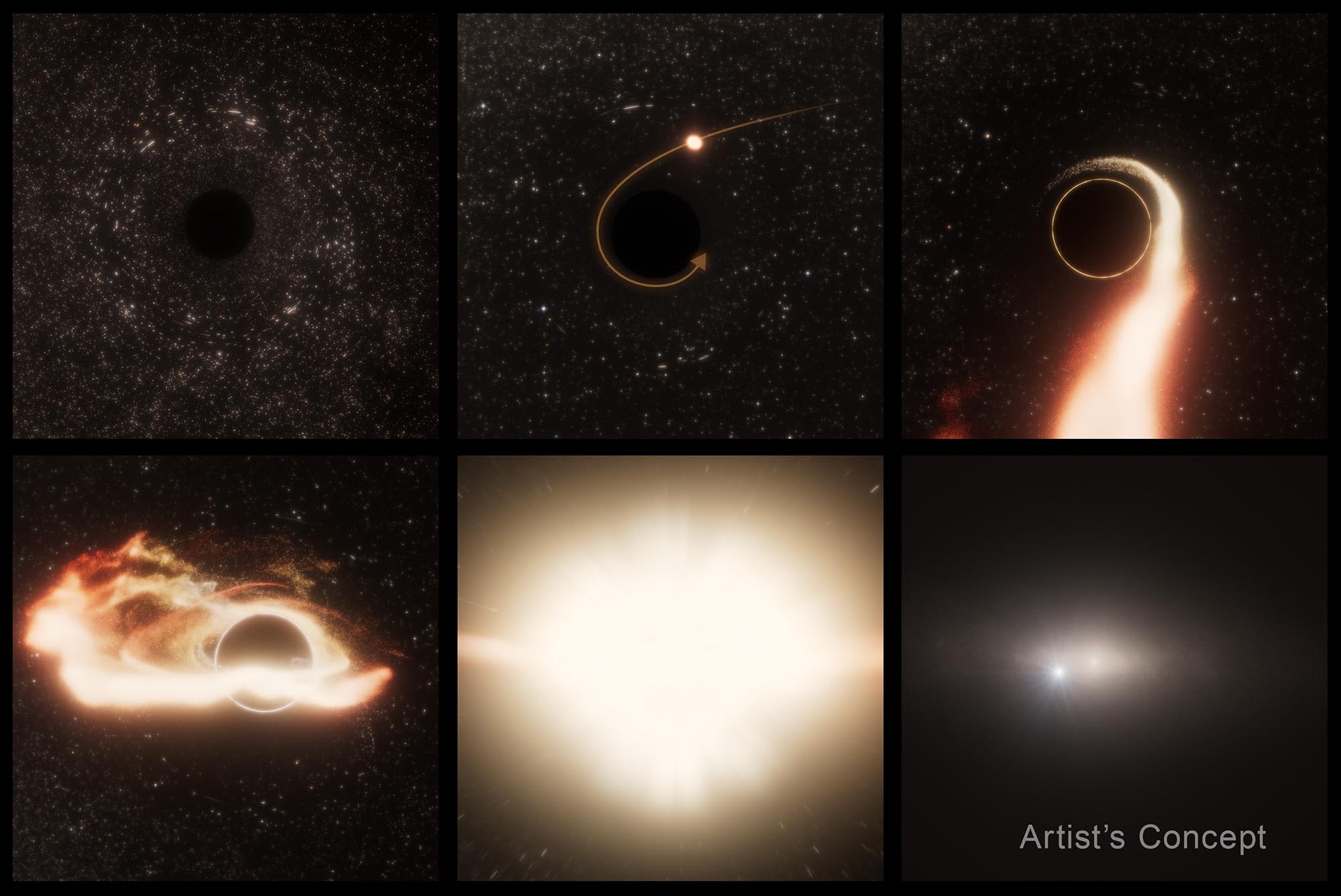NASA’s Hubble Pinpoints Roaming Massive Black Hole

Like a scene out of a sci-fi movie, astronomers using NASA telescopes have found “Space Jaws.”
Lurking 600 million light-years away, within the inky black depths between stars, there is an invisible monster gulping down any wayward star that plummets toward it. The sneaky black hole betrayed its presence in a newly identified tidal disruption event (TDE) where a hapless star was ripped apart and swallowed in a spectacular burst of radiation. These disruption events are powerful probes of black hole physics, revealing the conditions necessary for launching jets and winds when a black hole is in the midst of consuming a star, and are seen as bright objects by telescopes.
The new TDE, called AT2024tvd, allowed astronomers to pinpoint a wandering supermassive black hole using NASA’s Hubble Space Telescope, with similar supporting observations from NASA’s Chandra X-Ray Observatory and the NRAO Very Large Array telescope that also showed that the black hole is offset from the center of the galaxy.
The paper will be published in an upcoming issue of The Astrophysical Journal Letters.
Surprisingly, this one million-solar-mass black hole doesn’t reside exactly in the center of the host galaxy, where supermassive black holes are typically found, and actively gobble up surrounding material. Out of approximately 100 TDE events recorded by optical sky surveys so far, this is the first time an offset TDE has been identified. The rest are associated with the central black holes of galaxies.
In fact, at the center of the host galaxy there is a different supermassive black hole weighing 100 million times the mass of the Sun. Hubble’s optical precision shows the TDE was only 2,600 light-years from the more massive black hole at the galaxy’s center. That’s just one-tenth the distance between our Sun and the Milky Way’s central supermassive black hole.
This bigger black hole spews out energy as it accretes infalling gas, and it is categorized as an active galactic nucleus. Strangely, the two supermassive black holes co-exist in the same galaxy, but are not gravitationally bound to each other as a binary pair. The smaller black hole may eventually spiral into the galaxy’s center to merge with the bigger black hole. But for now, it is too far separated to be gravitationally bound.
A TDE happens when an infalling star is stretched or “spaghettified” by a black hole’s immense gravitational tidal forces. The shredded stellar remnants are pulled into a circular orbit around the black hole. This generates shocks and outflows with high temperatures that can be seen in ultraviolet and visible light.
“AT2024tvd is the first offset TDE captured by optical sky surveys, and it opens up the entire possibility of uncovering this elusive population of wandering black holes with future sky surveys,” said lead study author Yuhan Yao of the University of California at Berkeley. “Right now, theorists haven’t given much attention to offset TDEs. “I think this discovery will motivate scientists to look for more examples of this type of event.”
